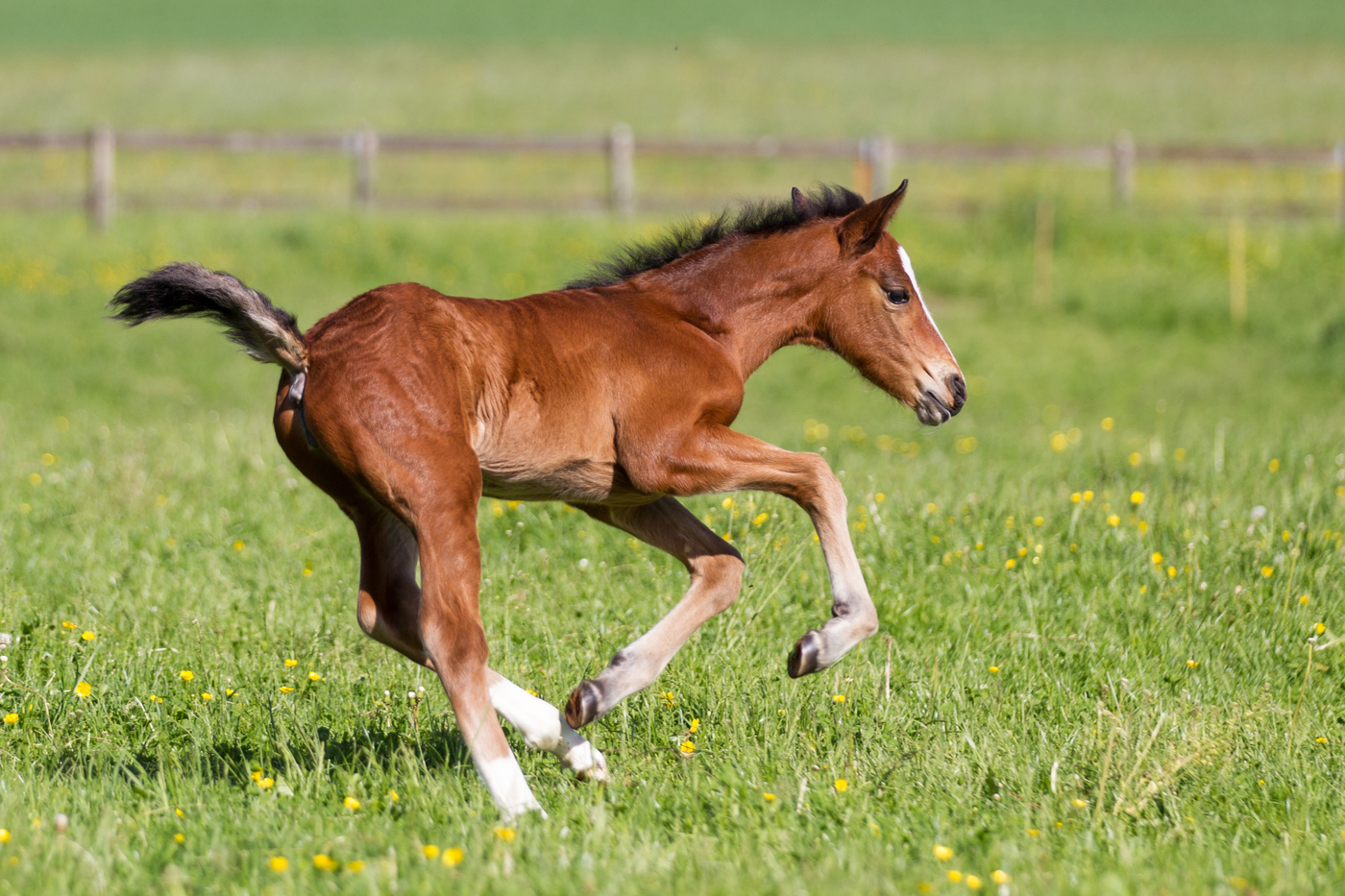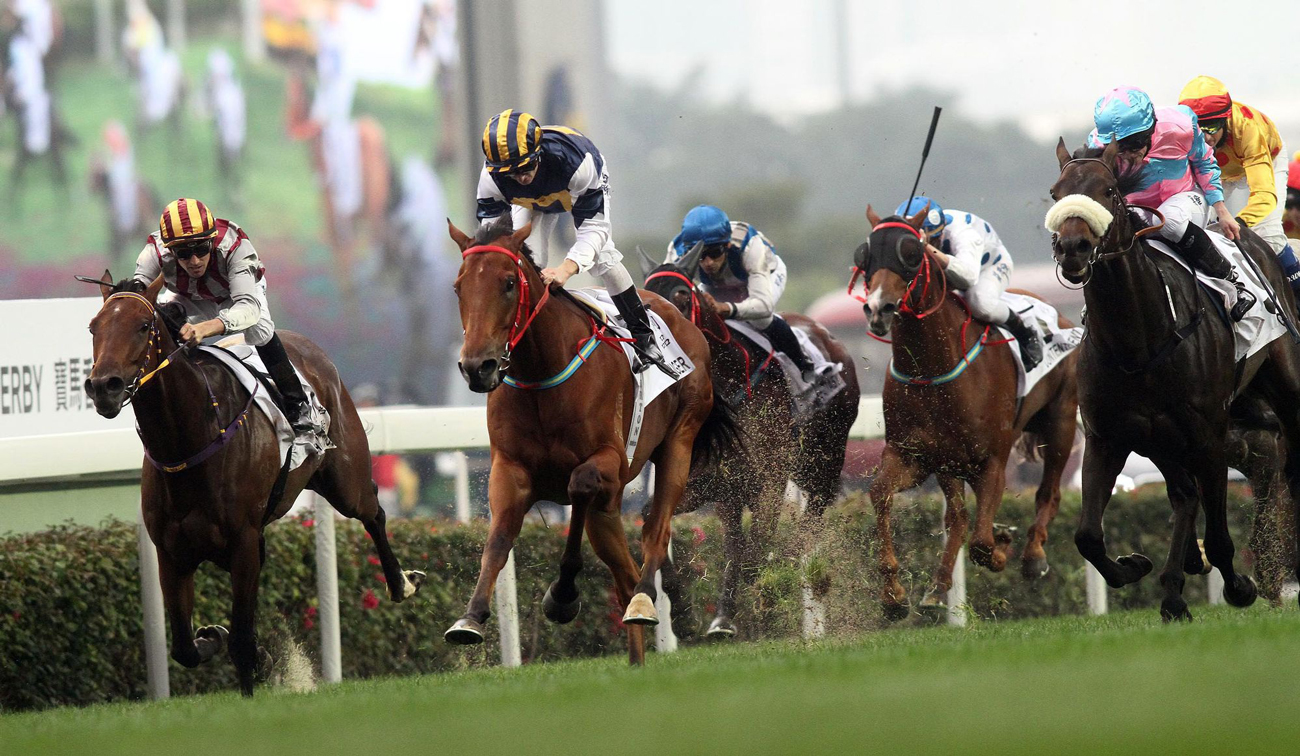Whether riding out on a gorgeous summer morning or mucking out in the depths of winter, life with a horse can be a very rewarding and challenging experience. Anyone who owns a horse knows the amount of daily effort it takes from turning out and mucking out to riding and grooming. Not to mention the more occasional tasks of arranging horse insurance, vet visits and travelling to events.
Your day will be closely aligned to their care, but we know you wouldn’t have it any other way. But have you ever wondered about the daily lives of other horses you come across? What about those beautiful racehorses?
The lives of these kings and queens of the equine world can be very different from that of the usual happy hacker or weekend showjumper. Read on to find out a bit more about their average day.
A racehorse’s early life
Early on in life potential racehorses are bought from specialist breeders with racing already well in mind. Like any young horse, they’ll be put out to pasture to grow and develop naturally without the stresses of training. However, before they are fully grown, they will already have begun training towards their future destiny.
At this early stage, training will be confined to them getting used to being handled and having a bit in their mouth and a saddle on their back. They’ll also have to get used to wearing rugs, being shod and a whole host of other daily activities.
Horses are broken-in in a variety of ways depending on the individual trainer. But many trainers use traditional methods such as long reining. Only when this stage is completed will the horse be asked to accept a rider – a vital process!
Once the horse has done this and reaches a reasonable level of speed and fitness, they’ll be taught how to ‘race’ and how to ‘settle’ and listen to jockey commands. The final part of the process teaches the young equine to enter and jump out of the stalls.
Horse insurance through Equesure can be arranged for all ages of horses from foals (31 days and older) right up to veterans.

A typical daily routine
All racing yards will have slightly different timetables. However, most will follow a strict schedule beginning at dawn and ending after dark, which might look something like this:
- 5:00am – First feeds given. Plenty of time before first training activities. Horses checked for any problems.
- 6:00am to midday – Mucking out. Temperatures taken of horses that don’t appear 100% themselves. Riding of horses in lots. A racehorse will usually be exercised for an hour or so and have a changing routine of work through the week. Whether on the circular canter, woodchip gallop or in the lunge ring, the horses are then washed off and have a pick of grass. Perhaps a brief spell on the walker to cool the muscles down.
- 12:30pm – Second feed given.
- 1:00pm to 3.30pm – Rest time for the horses when the yard will quieten down.
- 3:30pm to 5.30pm – Evening stables when the horses are skipped out, groomed and re-checked for any injuries or other problems. If it’s a cold night they’ll be rugged up. Third feed given.
- 8:30pm – Late night check to ensure all horses are happy and content. Possible fourth feed.
What do racehorses eat?
The intense training programmes of racehorses often mean they may struggle to consume enough grass and hay to maintain their ideal weight.
Consequently, racehorses are typically fed large amounts of grain and oats, to provide the calories they need for optimum performance.
While oats were once the staple diet of working horses, nowadays they’re fed alongside a high-quality, scientifically formulated racing diet.
This includes hay and grass, vitamin supplements and additional feedstuffs, such as sugar beet pulp. Fibre is crucial for a balanced diet and a typical racehorse’s digestive health and wellbeing.
What happens on race day?
If a horse is going to race, then clearly the day is going to be different from the others.
Depending on the time and location of the meet, racehorses will usually arrive at least three hours before the race. This is so they can be fed and watered well in advance and have time to relax.
At least one hour before the race they’ll be taken to the pre-parade ring and then saddled up in the saddling boxes. They will then be walked down to the main parade ring. Despite the crowds, horses need to be kept calm.
Horses will be walked round in front of the stalls while girths are checked and loaded into the stalls in a set order. Again, keeping the horse relaxed is vitally important while waiting for the start.
Once the race is over, the first four finishers will be dope-tested for any prohibited substances. All horses will be washed off and walked around until they’re dry and settled. They’ll be given time to relax before heading home, hopefully with a win to their name!

Horse insurance through Equesure
Racehorses truly are incredible creatures at the very peak of physical prowess. Whether or not your equine friend ever reaches this standard of competition you’ll need to protect them with the best horse insurance cover you can afford.
With over 60 years’ experience in the equine insurance market, our team of specialists can offer you a bespoke insurance policy with options tailored for the particular needs of your horse.
From companionable veteran horses to keen competitors, we can help protect them against any potential risks.
If you arrange cover through Equesure you could benefit from the following:
- Vets’ fees up to £7,500 per incident.
- Personal accident cover up to £30,000.
- Public liability up to £5 million.
- Cover for death, theft or straying of horse.
Give our team a call and get a quick quote today.
Policy benefits and features offered may very between insurance schemes or cover selected and are subject to underwriting criteria. Information contained within this article is accurate at the time of publishing but may be subject to change.





